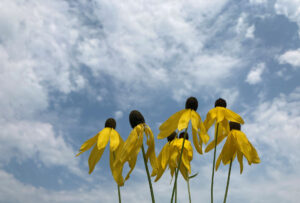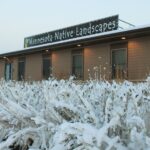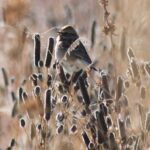We are often asked when is the best time for seeding our native seed, or if it\’s too late to seed now. Now is a great time to seed native seed mixes! Often, the best answers come directly from nature. If you walk through a restored prairie or any native planting area right now, you\’ll notice seeds are easily separated from the plant. Wind has dispersed many of the smaller and lighter seeds already, and others will fall with subsequent snowstorms throughout the winter. Seeds that fall onto the soil surface will lay dormant until next spring, and fresh snowfalls will help to naturally stratify the seed and work it into the top layers of soil. A great time to seed is a sunny day right after a light snowfall. The sun light will warm the seed and help it melt its way through the snow and onto the soil. Later snowfalls will create insulation, and a freeze thaw cycle will naturally occur between the bottom layers of snow and upper layers of the soil. These naturally stratified seeds will have a jump start on the growing season once the spring thaw hits. Another excellent time for a dormant seeding is just before the forecast calls for the first significant snowfall.
Other seeds that don\’t make it to the soil surface will serve as food for local wildlife. It\’s a good idea to hold off cutting or mowing of gardens and natural areas until spring to provide essential food and shelter to our local wildlife.



